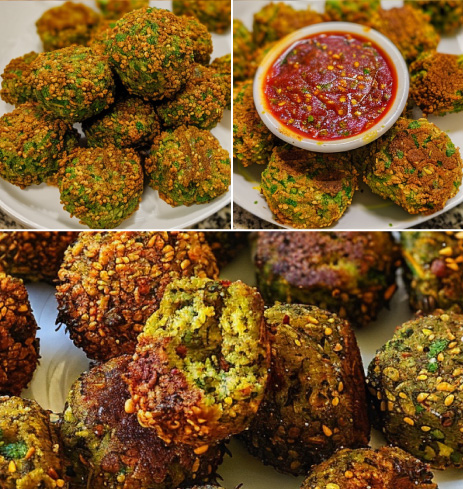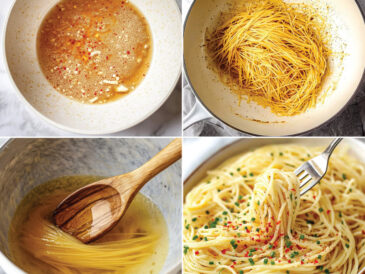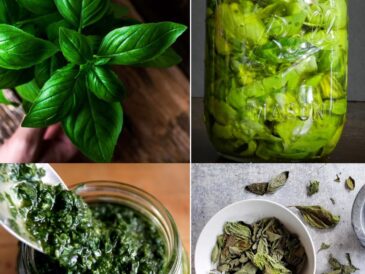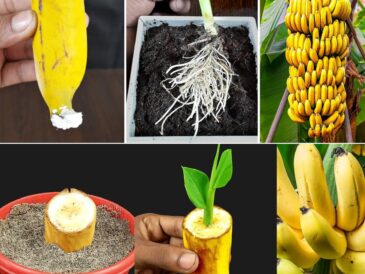Falafel, the deep-fried ball or patty made from ground chickpeas or fava beans, has long been a staple of Middle Eastern cuisine. Today, its popularity has transcended cultural boundaries, making it a beloved dish worldwide. Often enjoyed as a snack, appetizer, or main course, vegan falafel has captured the hearts (and stomachs) of plant-based eaters and meat lovers alike. In this comprehensive guide, we’ll explore the history, ingredients, cooking methods, serving suggestions, and the health benefits of vegan falafel, delving into why it deserves a special place in your kitchen.
The Rich History of Falafel
The origins of falafel are somewhat murky and fiercely debated. Some historians claim that it dates back to ancient Egypt, with a possible link to a dish called “ta’ameya,” made from fava beans. Others assert that the dish spreads throughout the Levant region, including modern-day Lebanon, Syria, and Palestine, where chickpeas were favored in falafel recipes. Regardless of its exact origins, falafel has evolved over centuries, becoming a popular street food in various cultures.
Traditionally, falafel is consumed in pita bread with fresh vegetables, tahini sauce, and pickled items, creating a harmonious blend of flavors and textures. As the world has embraced plant-based eating, falafel has garnered attention as not only a tasty treat but also a healthy and sustainable food source.
Key Ingredients in Vegan Falafel
The beauty of falafel lies in its simplicity, with the primary ingredients being whole, plant-based foods. Here’s a closer look at what makes up delicious vegan falafel:
1. Chickpeas or Fava Beans
Chickpeas (also known as garbanzo beans) and fava beans are the foundational ingredients in falafel. While traditional recipes often utilize fava beans, chickpeas have become popular due to their widespread availability. Both are rich in protein, fiber, and essential nutrients, making them an excellent food choice for vegans.
- Nutritional Benefits: Chickpeas provide iron, magnesium, and B vitamins, while fava beans are known for their high fiber content and are a good source of folate, making them a perfect addition to a balanced diet.
2. Fresh Herbs and Spices
A defining feature of falafel is its aromatic flavor profile, created through the use of fresh herbs and spices. Common herbs include parsley and cilantro, while spices such as cumin, coriander, and garlic add depth and warmth to the mixture.
- Flavor Enhancement: Fresh herbs not only contribute flavor but also add antioxidants and essential vitamins.
3. Onion and Garlic
Onion and garlic lend a savory foundation to the falafel mixture. They add moisture and help bind the ingredients while enhancing the overall taste of the dish.
4. Flour and Baking Powder
To achieve a desirable texture, a small amount of flour (usually chickpea flour or all-purpose flour) may be added to the mixture. Baking powder is often used to lighten the falafel and create a fluffier texture once cooked.
5. Oil for Frying (Optional)
While traditional falafel recipes call for deep-frying, there are healthier alternatives available. Baking or air-frying are great options that significantly reduce the oil content.
Making the Perfect Vegan Falafel
Creating delicious vegan falafel at home is straightforward and rewarding. Below is a step-by-step recipe to guide you through the process.
Ingredients:
- 1 cup dried chickpeas (soaked overnight)
- 1 small onion, chopped
- 2 cloves garlic, minced
- 1/2 cup fresh parsley, chopped
- 1/2 cup fresh cilantro, chopped
- 1 teaspoon ground cumin
- 1 teaspoon ground coriander
- 1 teaspoon baking powder
- 3 tablespoons all-purpose flour (or chickpea flour)
- Salt and pepper to taste
- Oil for frying (or cooking spray for baking)
Instructions:
- Prepare the Chickpeas: Drain and rinse the soaked chickpeas, then add them to a food processor. Pulse until they are coarsely ground, but not pureed.
- Combine Ingredients: Add the chopped onion, minced garlic, parsley, cilantro, cumin, coriander, baking powder, flour, salt, and pepper to the food processor. Pulse until well combined, but ensure the mixture still has some texture.
- Chill the Mixture: Transfer the mixture to a bowl, cover it with plastic wrap, and refrigerate for at least 30 minutes. This chilling step helps the falafel hold its shape during cooking.
- Shape the Falafel: Form small balls or patties (about 1.5 inches in diameter) from the chilled mixture. If the mixture is too crumbly, add a splash of water until it can hold together.
- Cook the Falafel:
- Frying: Heat oil in a deep pan and fry the falafel until golden brown, about 3-4 minutes on each side. Place them on paper towels to drain excess oil.
- Baking: Preheat the oven to 400°F (200°C). Place the falafel on a greased baking sheet or lined with parchment paper. Spray them lightly with cooking spray and bake for 20-25 minutes, flipping halfway through, until they are crispy and golden.
- Serve and Enjoy: Serve the falafel within warm pita bread with fresh vegetables, such as tomatoes, cucumbers, and lettuce, and drizzle tahini sauce or a garlic yogurt dressing over the top.
Creative Serving Suggestions
While falafel is delicious on its own, it can also be incorporated into various dishes:
1. Falafel Salad Bowl
Create a vibrant salad by placing falafel on a bed of mixed greens, cherry tomatoes, cucumber, red onion, and avocado. Drizzle with tahini dressing for a refreshing meal.
2. Falafel Wrap
Wrap falafel in a large tortilla with hummus, assorted vegetables, and a splash of hot sauce for a satisfying lunch on the go.
3. Falafel Platter
Serve falafel as part of a mezze platter with hummus, baba ghanoush, stuffed grape leaves, olives, and pita bread, perfect for sharing with friends.
4. Falafel Burger
Transform falafel into a delicious burger by placing it on a bun with lettuce, tomato, and avocado, topped with a creamy sauce.
The Health Benefits of Vegan Falafel
In addition to its deliciousness, vegan falafel is packed with health benefits:
- High in Protein and Fiber: Chickpeas and fava beans are excellent sources of plant-based protein and fiber, which help keep you full and satisfied.
- Nutrient-Dense: Packed with vitamins and minerals from the added herbs and vegetables, falafel is a well-rounded meal option.
- Suitable for Various Diets: Vegan falafel is not only plant-based but also gluten-free (if chickpea flour is used), making it accessible to a wide audience.
- Low in Glycemic Index: Foods made with legumes, such as falafel, have a low glycemic index, supporting stable blood sugar levels.
Conclusion
Vegan falafel is more than just a tasty treat; it’s a versatile, nutritious, and culturally rich dish that brings people together. Its adaptability makes it suitable for any occasion – be it a quick snack, a festive gathering, or a nutritious meal. By embracing this classic food and making it a staple in your kitchen, you will not only enjoy fantastic flavors but also contribute to a healthier, plant-based lifestyle. So, grab your ingredients, roll up your sleeves, and start experimenting with your own vegan falafel creation today!




